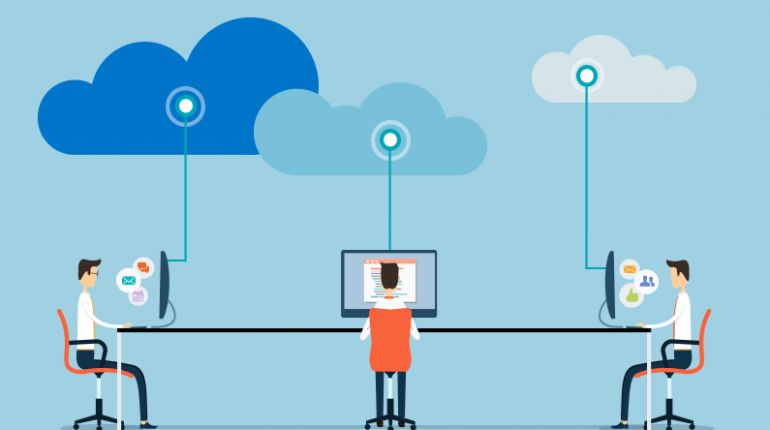With the recent ransomware attack WannaCry' that infected more than 230,000 in over 150 countries, the world is still recuperating from the impact that has left a massive depression in the cyber security. Many local systems and networks across various organizations were affected owing to the un-updated security updates while leaving systems with unsupported operating systems more vulnerable and exposed to the ongoing threat. The abrupt outbreak left the organizations all over the globe constantly slogging away to figure out solutions, though the situation is much under control now. The lack of preparation and control strategies against such blow-ups in addition to the flaws in the revision of necessary security updates altogether caused a hefty loss of important, private and highly confidential information.
The impact was huge. Although the attack has been brought under control, however, it has undeniably raised quite a few serious concerns regarding the much-hyped cyber security. The biggest question that has raised the brows is- Is Cloud Computing really secure as intended amid severe epidemics? Well, the coin always has two sides. The concept of cloud computing has the world take a huge leap and rely on a centralized system to preserve the data, however, revealing ample threat to the same at the same time until enough means are deployed for data protection. For there are several issues hovering around the security provided by the cloud, there are a considerable number of solutions that simplify and enhance the quintessential security and protection.
Here's a guide that could probably prevent your organization or system from being one of the sitting ducks.
1. Cloud Standards and Certifications
For any organization, irrespective of the industry, it is necessary to formulate a set of standards, policies, and protocols to differentiate between what shall be acceptable and what ought to be denied, and which strictly need to be adhered to. Such standards help in attaining only what is desirable and may not cause any harm to your organization's private and confidentially-held information. Appropriate certificates allow the customers to gauge the level of security exerted over their data. As more data goes up in the cloud, it becomes more prone to theft or manipulation. Though the cloud provides quite great security services, you can always leverage the devised standards developed by popular organizations to enhance the same.
2. Access Control and Identity Management
When you are centralizing your data on the cloud, the process of authorization of who gets to see what follows. Access control has always been the top priority of any running organization. The reason is simple. Because you don't want others or a part of people to access what you do. Perhaps, not because it is a private data but because you don't want it to get into wrong hands and face the consequences. So, it is always a better and viable option to establish appropriate rights and controls to the users over the accessibility of the data. Such mechanism segregates the users on the basis of who's allowed to do what and how much and identify them easily in case of any breach or manipulation. It is necessary to control the authentication and manage identities across your cloud and other clouds.
3. Monitor Data Access
The set of security protocols along with authorization rights govern the data usage within an organization. The importance reflects specifically in the areas where the access to certain websites is prohibited that contain objectionable or detrimental content. The procedure follows certain paradigms that determine who uses what kind of data, how much and if it serves the interest of the organization. It is necessary to keep a watch if there's an excess data usage at any access point. Apart from this, the solution that can be applied is the classification of rights to access specific websites as per the role in the organization and the kind of work one does. Besides, designating and maintaining a certain accessibility speed for particular departments can help you monitor and track the data usage.
4. Security Gateways
Keeping multiple check-points on the communication channel is rather indispensable. The procedure follows the rule that every data exchange goes on the channel goes through each and every security check-points in order to determine its validity in the interest of the organization. The validity further, revolves around the terms and policies as laid down by the organization. The benefits that follow include allowing only the legitimate data to be accessed by the users and diverting the one that is spurious. Secondly, it allows the organization to continuously improve its security mechanisms and redevelop the ones that have become ineffective over the years due to rapid advancement in technology.
5. Comprehensive Security Approach
It is necessary to ensure adequate and strong security cover to devices, management and monitoring systems, network infrastructure and transaction environment via a set of preventive and corrective controls. A few of these fundamental security controls include data encryption/decryption algorithms, real-time monitoring, device registration and authentication, network classification, etc. Therefore, a comprehensive approach confirms maximum protection and minimum breach to the cloud data security.
Wrap Up
These solutions do lend a helping hand to take on many of the cyber-attacks and threats. However, it is always recommended and obviously the first choice, to be well aware of all the requisites that avert the undesirable hazards, strengthen the security of your system, and curb the impact under severe circumstances. After all, security buys you trust and you can never afford to lose a bit, ain’t it?





No comments